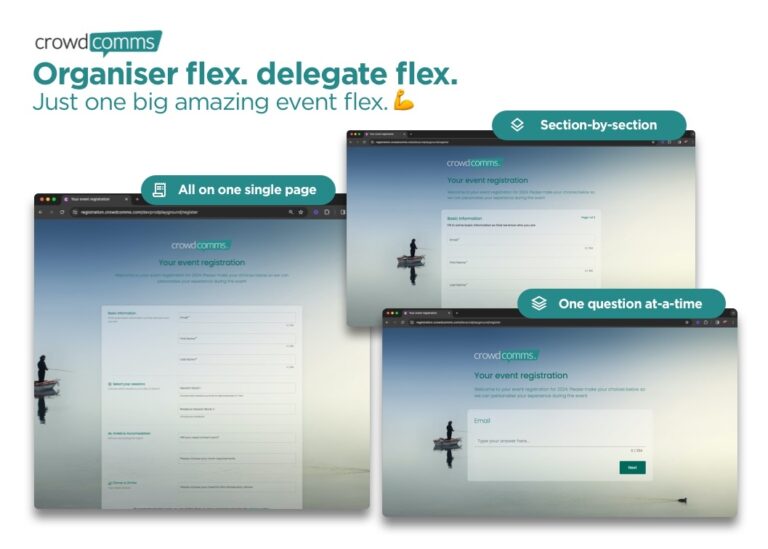Is your event purse feeling the pinch?
As inflation continues to rise and disposable incomes stagnate or go backwards, it’s no surprise that many of us are tightening our budgets and reducing our spending.
Like just about every other sector, this difficult period is likely to impact the events industry.
From staff shortages to energy costs, food supply to petrol prices, organisers will need to navigate one or two challenges to make sure events stay viable and affordable for attendees.
While the road ahead may feel tough (especially when we’ve all been so excited about the return to in-person events) there are plenty of ways event planners can reduce overheads and maintain positive momentum, without compromising event quality and appeal:
Choose Your Date
Booking the same date each year for your annual event makes scheduling easier. However, reviewing alternative date options (even if it’s just a day to two) can save money. Moving your event from a Friday to a Thursday, for example, might give access to lower venue rates.
Or maybe you can target low season periods when your preferred venue isn’t as busy.

Reviewing what’s happening in the local area around your event date will help manage costs. If there are heaps of events scheduled, your venue is likely to be more expensive. Not only that but travel and accommodation prices may be higher for your attendees.
Opting for a quieter period in your chosen town or city will help make the event affordable for both you and your attendees.
Think Paperless
From tickets to event brochures, brand banners to post-event surveys – printed material can account for a significant percentage of a planner’s event budget.
Digital alternatives are cheaper and can almost entirely remove the need for printed material.
Event apps contain all the event information your attendees need, including personalised agendas, interactive mapping, networking profiles and post-event surveys. High quality apps (like CrowdComms’) have in-built flexibility which means they can be re-branded and re-used for multiple events; a great way to avoid waste and save on print costs for recurring events.
Digital signage is also an effective way to create an event wow factor without printed material. Digital screens can showcase dynamic visuals such as event branding, sponsor branding, and videos, both pre-recorded and livestreamed.
Hybrid or Virtual?
A gamechanger that has revolutionised the way we experience events, virtual event technology not only delivers an unprecedented attendee reach it has made events more accessible and affordable.
A fully virtual event can significantly reduce event production costs. On average, a virtual event (assuming the same content and scope) will cost around 80% less than an equivalent in-person event.
Removing the need for venue hire, catering, and extensive staffing not only reduces direct event expenditure but also saves planners’ time as a virtual event is often less labour intensive.
If in-person elements are critical to your event, think about running a hybrid event. Hybrid events can scale down the in-person event costs and even boost revenue by including a virtual option for remote attendees.
Speaker Costs
Speaker costs can also account for a large part of any event budget.
Fully virtual events may be more cost-effective here as organisers only have to pay for speakers’ appearance fees, not their travel and accommodation costs.
If you’re running a hybrid or in-person event, consider having a proportion of your speaker roster broadcast to your attendees (both remote and in-person audiences) as a live stream. You can still have two or three marquee speakers physically attend your in-person event, but including live stream guests will help manage costs.
Boost Sponsorship Revenue
Finding ways to increase revenue is just as important as making savings. Sponsors are a critical part of ensuring events remain viable and affordable.
Sponsors will also be scrutinising their expenditure, so make sure you offer them an extra juicy ROI on their sponsorship event spend. Your digital event features deliver a myriad of opportunities for sponsors to reach and connect with event attendees, whether they are in-person or virtual:
Event app opportunities include: branded pop-ups, live links, event feature sponsorship, branded video backdrop, lead generation, sponsored posts and articles, incentives (using features such as gamification), and branded interactive sessions (via live Q&A and polling).
Digital signage opportunities include: full-screen ‘posters’, video advertising, and event feature sponsorship (such as agenda updates and upcoming session announcements).
If your in-person event is utilising badge-printing kiosks, you can offer branding on the kiosks, touchscreens and the badges themselves.
Green Catering
We recently looked at how events can become more sustainable. One of the areas discussed was featuring more eco-friendly catering and how switching to plant-based meals and carefully calculating the right volumes for attendee numbers reduces waste and helps the planet.
Another upside to reducing food waste and increasing the amount of seasonal plant-based food is cost savings.
Meat, especially lamb and beef, is an expensive element of event catering. As is air-freighted produce such as fish and non-seasonal fruit and veg. This doesn’t mean event menus need to be 100% meat-free, but having low volumes of meat, minimising dairy, and including locally sourced fruit and veg can reduce average meal costs by 14% .
Other simple ideas to reduce catering costs can include providing bite-sized treats and chocolates as desserts (cheaper than custom-made cakes and puddings), asking attendees to pre-order their required food, and reducing the amount of complimentary alcoholic drinks.
In Summary
Although the events industry may be challenged by price increases and cost of living pressures, thoughtful planning and simple changes can reduce overheads to make an event both affordable and viable.






